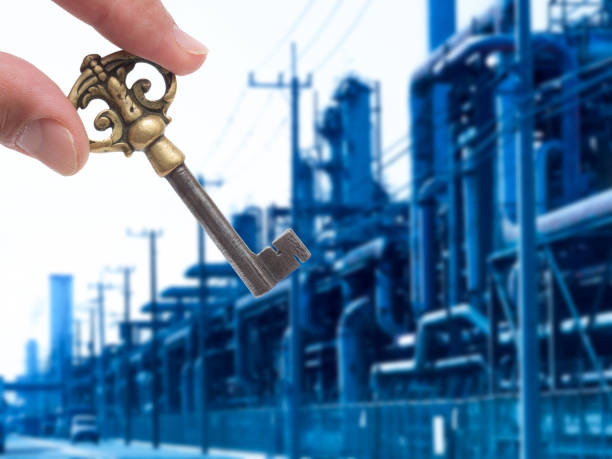The Synergy of Innovation and Craftsmanship in Industry
Innovation and craftsmanship are two pillars of industrial growth. While innovation introduces fresh ideas and advancements, craftsmanship ensures the quality and precision of execution. Together, these elements drive industries toward greater efficiency, sustainability, and competitiveness. From streamlining production processes to creating bespoke solutions, this synergy is crucial for unlocking new opportunities.
Role of Advanced Technologies in Innovation
Advanced technologies play a significant role in industrial innovation. Tools like automation, robotics, and artificial intelligence (AI) are revolutionizing workflows across various sectors. For example, AI-powered systems analyze massive data sets to identify inefficiencies or predict maintenance issues, helping companies save time and reduce costs. Additive manufacturing, or 3D printing, is another game-changer, allowing manufacturers to prototype and produce complex designs with lower material waste.
These innovations don’t just optimize performance; they offer the flexibility to adapt to market demands. The ability to quickly pivot production lines or customize products ensures businesses remain competitive in rapidly evolving industries.
Skilled Labor as a Cornerstone of Craftsmanship
While technology enables innovation, skilled labor remains the backbone of craftsmanship. Industries rely on experienced workers to bring designs to life and maintain high standards of quality. Skilled professionals possess not only technical expertise but also an understanding of the materials, techniques, and processes that make products reliable and durable.
For example, in industries requiring precision, such as aerospace, medical devices, or automotive manufacturing, the value of a highly trained craftsman cannot be overstated. Their work ensures that every component functions flawlessly, often exceeding safety and performance requirements.
Industries can unlock greater potential by investing in continuous training programs, apprenticeships, and certifications, keeping workers updated with the latest tools and techniques.
Balancing Efficiency with Sustainability
Industrial growth is no longer solely about speed and scale. Sustainability has become a critical consideration. Consumers increasingly demand products that are not only functional but also environmentally responsible. This has led industries to rethink their approach to production, blending innovation with eco-conscious craftsmanship.
Many companies now emphasize the circular economy, designing products that can be recycled or reused at the end of their lifecycle. Others invest in energy-efficient machinery to lower their carbon footprint. By focusing on sustainability, industries align their processes with evolving regulations and consumer values, paving the way for long-term success.
Regional Excellence in Manufacturing
Innovation and craftsmanship differ across regions, shaped by local expertise, resources, and culture. A notable example is the prevalence of specialized skills in certain areas. For instance, metal fabrication in Utah has grown into a robust industrial sector, combining advanced machinery with the craftsmanship of skilled tradespeople. This combination allows the region to produce durable, high-quality components that meet the demands of various industries, from construction to renewable energy.
By leveraging regional strengths and fostering collaboration between local businesses and workforce development programs, industries can achieve excellence and compete on a global scale.
The Intersection of Innovation and Craftsmanship
True industrial growth happens at the intersection of innovation and craftsmanship. When advanced tools are in the hands of skilled technicians, the results are revolutionary. Think of industries that blend automation with artisanal expertise, creating personalized yet scalable solutions. Whether it’s high-end furniture, custom machinery, or intricate electronic components, the harmony between these elements ensures products are both functional and aesthetically pleasing.
To maximize this synergy, industries must continually bridge the gap between technology and human talent. Encouraging collaboration between engineers, designers, and manufacturing teams fosters innovation and craftsmanship at every stage of the process.
Future Trends in Industrial Innovation
Looking ahead, several trends are likely to shape industrial innovation and craftsmanship. One notable shift is the integration of artificial intelligence tools with hands-on production techniques. Smart factories, equipped with sensors and real-time analytics, will allow industries to fine-tune every process for optimal efficiency.
Additionally, advancements in materials science are offering new possibilities. Lightweight yet durable composites and biodegradable materials are likely to replace traditional options in various applications, supporting both innovation and sustainability.
Industries are also adopting mixed reality tools like augmented and virtual reality, accelerating training and design development. With these technologies, manufacturers can simulate processes or troubleshoot designs before committing resources, blending innovation with the expertise of skilled workers.
A Future Built on Collaboration
As we move into the future, collaboration between industries, educational institutions, and governments will play a vital role in maintaining growth. Workforce development initiatives and research partnerships will lay the foundation for continued innovation and craftsmanship.
Industries must stay committed to merging cutting-edge technologies with time-tested skills. By doing so, businesses unlock new potential and meet the challenges of a dynamic global landscape with resilience and ingenuity.
Conclusion
Innovation and craftsmanship serve as the building blocks of industrial development. By combining the forward-thinking applications of technology with the precision and care of skilled labor, industries can achieve remarkable progress. From sustainable practices to the adoption of advanced technologies, the path forward demands a balance of ingenuity and expertise.
The future holds immense potential, and those industries that prioritize this blend of innovation and craftsmanship are poised to lead the charge toward a sustainable and prosperous tomorrow.



